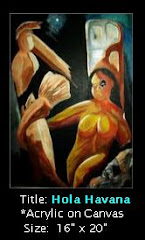While Gracie Allen may have invented the dumb blonde character in the 1930s, Marie Wilson perfected it the following decade playing the loveable-but-absolutely-scatter-brained Irma Peterson – first on radio, then in two movies and a relatively short-lived TV series.
Unlike Gracie, Marie was blessed with high cheekbones, an innocent face, and a killer figure.
She began working in films (often uncredited) around 1934, but managed to secure the role of Mary, Quite Contrary in Laurel & Hardy’s musical Babes in Toyland in 1934.
She was signed by Warner Brothers in 1935, and over the next four years appeared in many forgettable films. The best of the lot was Boy Meets Girl (1938) with James Cagney.
Once she was let go by Warners, film work slowed.
But Marie found success on the stage during the war years of the 1940's, appearing in the Los Angeles stage show "Ken Murray's Blackouts"; an amalgam of young starlets, bawdy humor, and novelty acts that ran for 7 years.
I profiled Ken Murray in January of 2009 in Ken Murray: Hollywood Without Makeup.
Marie also managed to appear in a few films during this time, including Rookies on Parade (1941), She's in the Army (1942), The Fabulous Joe (1947).
But true success came when CBS radio decided to explore the idea of creating a radio series based on the popular stage play, and film, My Sister Eileen – about two sisters (one sensible, one a starry-eyed actress) trying to make it in New York City.
When attempts to reach a deal failed, CBS came up with their own show about two girls (one sensible, the other daffy) trying to make it in . . . where else?
New York City.
The result was My Friend Irma, which starred Marie Wilson as dim-bulb Irma Peterson and (Cathy Lewis, Diana Lynn) as solid and dependable Jane Stacy.
Supporting the two leads were John Brown as Irma’s deadbeat boyfriend Al, and the inimitable Hans Conried as the Russian Violinist Professor Kropotkin, along with Alan Reed and Leif Erickson.
Although more than 300 episodes were recorded during its 7 year run, only about 50 of them have survived.
You can listen to them (or download them) off the Internet Archive.
My Friend Irma 51 Eps
The show proved immensely successful, and in 1949 Paramount Studios decided to make it into a movie – and used it to launch the film careers of an up-and-coming comedy duo – Martin & Lewis.
Two years later (1951), a sequel – again with Martin & Lewis – was released called My Friend Irma Goes West.
In both of these movies, Jane Stacy was played by the considerably more photogenic Diana Lynn, instead of Cathy Lewis.
And once again, these movies were very successful.
The TV version, which ran from January, 1952 until June, 1954, was the first live show to be broadcast from the from the CBS Television City facility in Hollywood.
Cathy Lewis reprises her role as Jane in the first year, but moves on and is replaced by a new roommate – Kay – played by Mary Shipp in season 2.
We’ve only a couple of TV episodes available right now, but hopefully more will turn up.
You can find them on the Internet Archive at this link.
Sadly, life ended too soon for all three actresses associated with this show.
After the show ended, Marie Wilson’s star was eclipsed by the arrival of Marilyn Monroe. She took to the road and performed summer stock, and dinner theatre, in plays like as "Bus Stop,", "Born Yesterday”, and “Gentlemen Prefer Blondes."
She died in 1972, at the age of 56, of cancer.
Cathy Lewis, who went on make numerous TV appearances until the mid-1960s (including as a semi-regular on Hazel), died in 1968 at the age of 51 - also of cancer.
And Diana Lynn, who appeared on TV shows during the 1960s, died of a stroke in 1970 at the age of 45.
A final postscript to the story.
Arthur Kurlan, the writer who brought My Sister Eileen to CBS in 1946 - only to see his project rejected, and a cloned My Friend Irma produced instead – sued the radio network and ultimately won compensation for himself and the original author, Ruth McKenney.
My Sister Eileen ran on Broadway for 864 performances, was made in two Hollywood movies (1942 & 1955), a 1953 Broadway Musical (Wonderful Town), and a brief 1960 TV series.
And the two-girls-in-the-big-city theme was carried forward again, in the 1970s, by the TV series Laverne & Shirley.
Proving, I guess, that some themes have universal appeal.









No comments:
Post a Comment